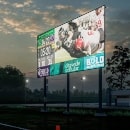Communication in The Church: 8 Ways Pastors Can Better Communicate With Their Congregations
Communication is key in any relationship, and this is especially true in the church. Pastors have the important task of not only delivering sermons and leading worship, but also connecting with and communicating with their congregations.
In this guide, we will explore 8 ways pastors can better communicate with their congregations, including the use of LED video walls during services, building a strong relationship with the congregation, utilizing technology in communication, delivering effective sermons, providing clear and transparent leadership, encouraging congregation participation, using small groups, providing pastoral care, and more.
Explanation of the importance of effective communication in the church
Effective communication is essential for building strong relationships and fostering a sense of community within the church. It allows pastors to connect with their congregations on a personal level, deliver sermons that engage and inspire, and make important decisions with transparency and accountability. Good communication also allows congregants to feel heard and valued, and to participate more fully in the life of the church.
Eight ways to enhance communication in the church
1. Use LED Video Walls During Services
LED video walls are a powerful tool for enhancing church services. These large, high-resolution displays can be used to display text, images, and video, and can greatly improve visibility and engagement during worship. LED video walls work by using thousands of small, individual light-emitting diodes (LEDs) to create a single, seamless display. This allows for a brighter, more vibrant image, and a wider viewing angle than traditional projection screens.
Benefits of using LED video walls during church services include:
- Improved visibility: LED video walls are much brighter and clearer than traditional projection screens, making it easier for congregants to read lyrics and see visual aids.
- Ability to display multimedia content: LED video walls can display text, images, and video, allowing for a more dynamic and engaging worship experience and church stage design.
- Flexibility: LED video walls can be used for a variety of purposes, such as displaying lyrics and scriptures, showing videos and slideshows, and even live streaming events.
Tips for effectively incorporating LED video walls into church services include:
- Placement: LED video walls should be placed in a location that is easily visible to all congregants.
- Lighting: It is important to control lighting in the worship space to ensure that the LED video wall is the focal point.
- Technical support: It is important to have a dedicated technical support team to ensure that the LED video wall is functioning properly.
Discover Ultravision LED Solutions: The Leading Provider Of Church LED Video Walls
At Ultravision LED Solutions, we understand the importance of effective communication in the church, and we are dedicated to providing the best LED video walls for churches.
We invite you to learn more about our solutions for churches on the following page: https://ultravisionledsolutions.com/products/church-led-wall
Our team of experts will work closely with you to understand your specific needs and create a custom solution that fits your budget and space. With Ultravision LED Solutions, you can trust that you are getting the best quality video walls and service in the industry.
2. Build a Strong Relationship with the Congregation
Building a strong relationship with the congregation is an essential part of effective communication. This involves getting to know congregants on a personal level, fostering a sense of community, and being available for one-on-one conversations.
Tips for getting to know congregation members on a personal level:
- Visit them in their homes in order to understand their daily lives and see their family dynamic.
- Be available for one-on-one conversations after services, during office hours, or by scheduling regular meetings.
- Attend church events and activities: This gives you the opportunity to interact and socialize with congregants in a relaxed setting.
Strategies for fostering a sense of community within the congregation:
- Organize social events by creating a church social calendar, with events such as potlucks, picnics, and game nights.
- Encourage members to get involved in church activities, by creating opportunities for congregants to volunteer and use their talents and skills.
- Encourage congregants to connect with one another: One way to do this is by creating a church directory, or by encouraging congregants to form small groups.
3. Leverage Technology in Church Communication
Technology has opened up many opportunities for pastors to communicate with their congregations. From social media, email, text messaging, and messaging apps, there are many tools available to help pastors stay connected with their congregations.
Best practices for using technology in the church:
- Create a church website: The site can serve as a hub for information about services, events, and activities.
- Use social media effectively by setting up a church Facebook group, or by utilizing other platforms such as Instagram or Twitter.
- Keep a regular email newsletter to share information about upcoming events and activities.
While technology can be a powerful tool for communication, it is necessary to be mindful of the potential drawbacks of relying too heavily on technology. This includes the potential for decreased personal interaction and the risk of alienating congregants who may not be as comfortable with technology.
4. Deliver Sermons That Connect and Engage
Delivering effective sermons is an important part of a pastor's role. This involves not only communicating the message of the gospel but also connecting with the congregation and engaging them in the worship experience.
Ideas for creating engaging sermons:
- Use storytelling by incorporating personal anecdotes, or by using parables and illustrations.
- Incorporate multimedia including LED video walls to display images, videos, or scriptures.
- Use humor to lighten the mood and create a more relaxed atmosphere.
Ways to connect with the congregation during sermons:
- Address current events by relating the message to recent events, or by addressing concerns that the congregation may have.
- Use a conversational tone: Speak directly to the congregation, rather than using a formal, lecturing tone.
- Encourage questions and discussion: Allow time for Q&A during or after the service, or by encouraging congregants to reach out to the pastor with any questions or concerns.
Techniques for delivering sermons in a clear and easy-to-understand manner:
- Use simple language: Avoid using jargon or technical terms that may be confusing to some congregants.
- Use repetition to emphasize key points and make the message more memorable.
- Using visual aids: This can include using a LED Video Wall to deliver images, diagrams, or props to help illustrate the message.
5. Provide Clear and Transparent Leadership
Providing clear and transparent leadership is an important part of effective communication in the church. This involves being open and honest with the congregation, and being accountable for decisions and actions.
Tips for being transparent in decision-making and communication with the congregation:
- Keep the congregation informed by sending regular updates via email, social media, or a church newsletter.
- Be open to feedback by conducting surveys, or by encouraging congregants to reach out with any questions or concerns.
- Be accountable and willing to take responsibility for any mistakes or missteps, and be willing to make changes when necessary.
Strategies for effectively communicating changes or decisions within the church:
- Be clear and concise: Provide clear explanations of the reasons for any changes or decisions.
- Give advance notice: Announce changes or decisions well in advance, so that congregants have time to prepare.
- Encourage participation: Allow congregants to provide input or feedback on any changes or decisions.
6. Encourage Congregation Participation
Encouraging congregation participation is an important part of effective communication in the church. This involves creating opportunities for congregants to get involved in church activities and decision-making.
Ideas to get congregants involved in church activities and decision-making:
- Create opportunities for congregants to volunteer: Create a volunteer sign-up sheet, or by reaching out to congregants who have expressed interest in certain areas.
- Give congregants a say in decision-making: Conduct surveys or hold town hall meetings.
- Recognize and rewarding participation: Publicly recognize and thank congregants who have volunteered, and provide incentives for participation.
Strategies for creating opportunities for congregants to share their talents and skills:
- Create a talent database: Collect information from congregants about their skills and interests.
- Form small groups: Create groups based on common interests, such as a choir, a book club, or a gardening group.
- Encourage congregants to lead: Provide opportunities for congregants to lead events or activities.
7. Build Small Groups
Creating small groups within the church can be a powerful tool for fostering a sense of community and encouraging participation. Small groups provide a more intimate setting for congregants to connect with one another, share their thoughts and feelings, and support one another.
Tips for effectively organizing and leading small groups:
- Identify a leader: Select a congregant who is willing and able to lead the group.
- Set clear guidelines: Create a set of rules for the group, such as confidentiality and respect for others.
- Encourage participation: Create a relaxed and welcoming atmosphere, and encourage all members to share and participate in discussions.
Strategies for creating a sense of community within small groups:
- Encourage bonding and socialization: Plan group activities, such as potlucks or outings.
- Favor open and honest communication: Create a safe space for members to share their thoughts and feelings.
- Push for accountability and support: Push members to hold one another accountable for growth and progress, and provide support for one another during difficult times.
It is crucial to maintain confidentiality within small groups, as this can encourage open and honest communication, and help build trust among members. This can be done by reminding members of the importance of confidentiality, and by providing clear guidelines and expectations for group discussions.
8. Actively Provide Pastoral Care
Providing pastoral care is an important part of a pastor's role. This involves offering support and assistance to those in need, and being available to listen and help.
Tips for effectively offering pastoral care:
- Listen actively: Give full attention to the congregant, and by showing empathy and understanding.
- Be available: Keep regular office hours, or by making oneself available for emergencies.
- Provide support and assistance: Connect congregants with resources or professionals, or provide a listening ear and a shoulder to lean on.
Strategies for providing support and assistance to those in need:
- Create a support network: Connect congregants with other congregants who have gone through similar experiences, or connect them with professionals or resources.
- Encourage self-care: Remind congregants of the importance of taking care of themselves, and provide resources for self-care.
Pastors should also practice self-care, as this can help them to better provide pastoral care to their congregations. This can include setting boundaries, practicing mindfulness and meditation, and seeking support when needed.
Final Words
Effective communication is essential for building strong relationships and fostering a sense of community within the church.
By utilizing tools such as LED video walls for churches, building relationships with congregants, utilizing technology, delivering effective sermons, providing clear and transparent leadership, encouraging congregation participation, using small groups, providing pastoral care, and more, pastors can improve communication and enhance the worship experience for their congregations.
At Ultravision LED Solutions, we are dedicated to providing the best LED video walls for churches. Discover the solutions we offer on the following page: https://ultravisionledsolutions.com/products/church-led-wall









